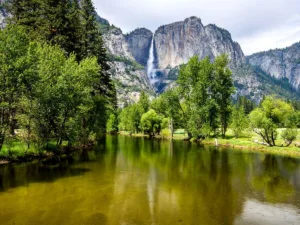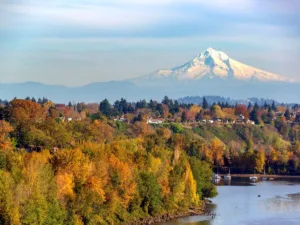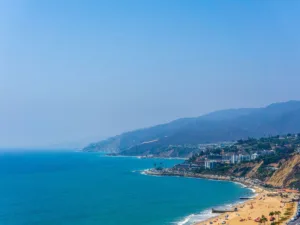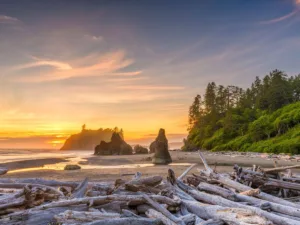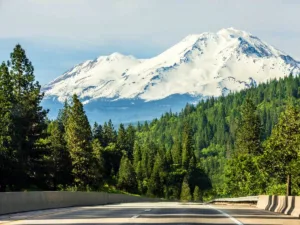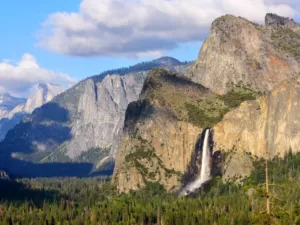One of the best things about California is its nature, protected within the expansive system of National Parks and Monuments. Dive into our Complete Guide to National Parks in California to truly appreciate the state’s natural wonders.
Today, you’ll learn about every National Park in California – Channel Islands, Death Valley, Joshua Tree, Lassen Volcanic, Pinnacles, Redwood, Sequoia & Kings Canyon, and Yosemite.
You’ll get tips which specific places you should visit, when it’s the best time of the year to visit, which wildlife you can expect to spot, and more.
Later, you’ll hear some more important tips for visiting the National Parks, so make sure to pay attention!
Let’s start right with…
9. Lassen Volcanic National Park
If you love hydrothermal features like hissing fumaroles and bubbling mud pots, Lassen Volcanic, located in the northeast corner of the Golden State, would be the best National Park for you.
Sometimes called a mini-Yellowstone, this park’s best places are Bumpass Hell, Lassen Peak, and Fantastic Lava Beds.
Bumpass Hell features the largest concentration of hydrothermal features within the park. Lassen Peak is one of the largest plug dome volcanoes on Earth, while Fantastic Lava Beds were created by flowing lava.
Lassen Volcanic National Park is home to a wide array of wildlife including bobcats, American black bears, mountain lions, coyotes, raccoons, weasels, foxes, and skunks.
Depending on how much of Lassen Volcanic you want to see, plan one to five days for your visit. The best time for your visit would be from July, when the roads usually open, till October, when snow starts to set again.
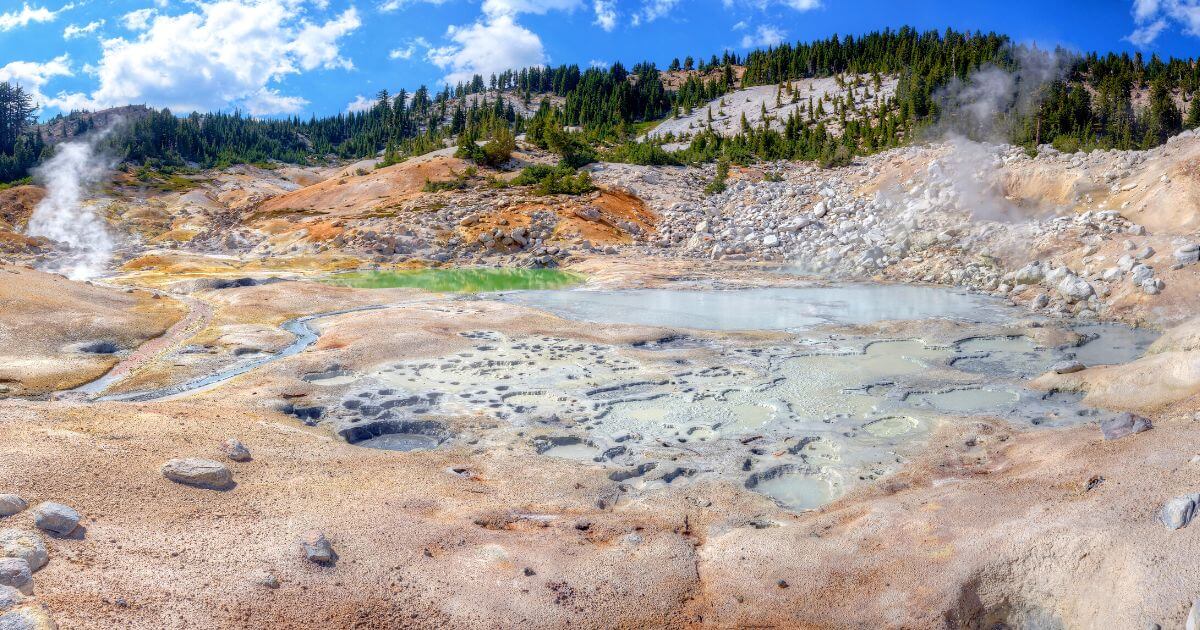
8. Channel Islands National Park
Channel Islands National Park, often dubbed as “the Galapagos of North America”, is another gem you’ll discover in our Complete Guide to National Parks in California.
It encompasses five of the eight California Channel Islands and the ocean surrounding them for one mile. Each island offers different, unique experiences.
More than 2.000 animal and plant species call Anacapa, Santa Cruz, Santa Rosa, San Miguel, and Santa Barbara Island their home, and 145 of them are not found elsewhere.
If you love kayaking or plan to go hiking, Santa Cruz Island would be your best option. But also Anacapa Island has breathtaking views and you’ll see countless seabirds.
While each season has its pros and cons, the peak seasons for snorkeling, diving, and kayaking are summer and fall. Blue and humpback whale watching season also lasts from summer to early fall.
Other wildlife you can expect to spot are the cute Island Foxes, gray whales, dolphins, sea lions, lots of birds including pelicans, Island Scrub Jays, and many more.
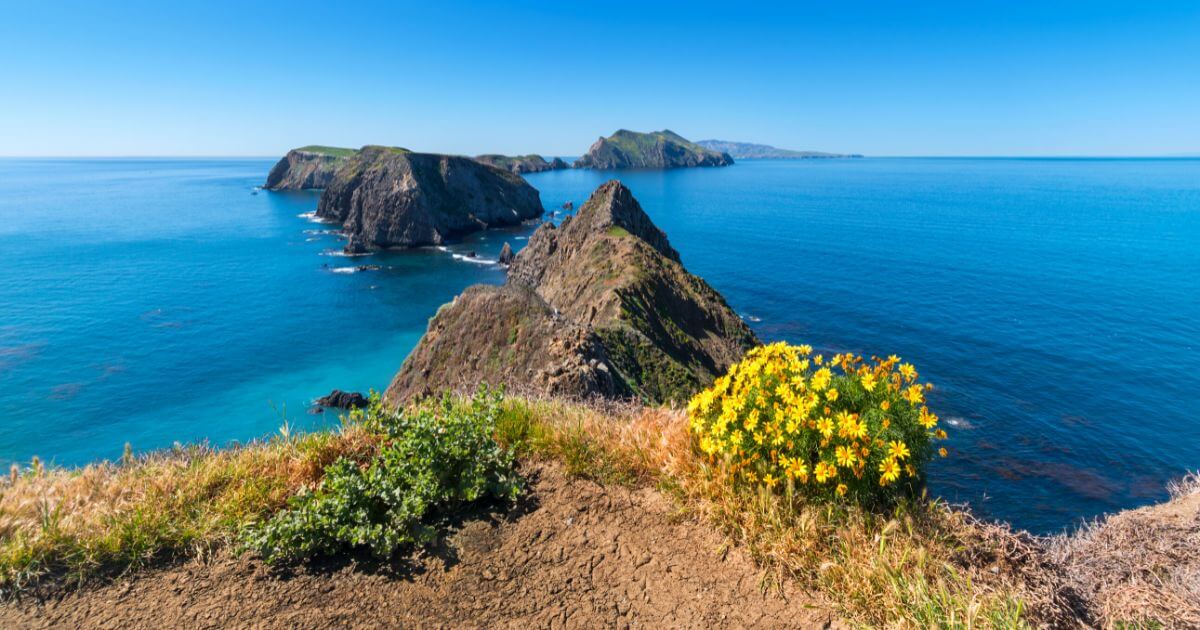
Number 7 is Californias youngest National Park, which was designated so in 2013:
7. Pinnacles National Park
Being composed of interesting rock formations, imposing pinnacles, and caves, Pinnacles National Park is perfect for people who prefer hiking on trails that are less visited than the ones in the bigger parks.
Other possible activities are viewing Californian Condors, rock climbing, and exploring caves.
The park is split between two regions. If you visit Pinnacle’s West side, you’ll reach the Chaparral trailhead parking area and have a clear view of the Pinnacles’ High Peaks.
Another place you should visit is the beautiful Bear Gulch Cave Trail.
Pinnacles is also home to numerous animal species, like canyon bats, mountain lions, humming birds, and condors.
As temperatures in summer might get too hot, visiting this park in Spring or in Fall would be best.

5. & 6. Sequoia & Kings Canyon National Parks
While these two are technically two independent parks, the National Park Service administers Sequoia and Kings Canyon National Parks together.
The distance from Sequoia National Park to Kings Canyon National Park is about 27 miles in north direction and, following the Generals Highway route, 108 miles by car.
Sequoia and Kings Canyon boast breathtaking landscapes with deep canyons and huge trees. Some of the most impressive sights are the General Sherman Tree, which is the world’s largest tree by volume, Moro Rock with its breathtaking views, Kings Canyon Scenic Byway, and the imposing Roaring River Falls.
As Sequoia and Kings Canyon range from the low foothills to the peaks of the Sierra Nevada, the parks are home to many different animals.
In the foothills, you can encounter black bears, bobcats, and gray foxes. In the montane forests and meadows, sights of squirrels, mountain lions, and mule deers are possible. Sierra Nevada bighorn sheep, marmots, and mountain yellow-legged frogs call the subalpine and alpine areas their home.
While one day is enough to visit all the main sights in Sequoia and Kings Canyon, you should plan to stay two or three days if you want to experience some of the best vistas and hike some harder trails.
The best time to visit these National Parks is from June to August, when the weather is warm and the sun shines most of the time.
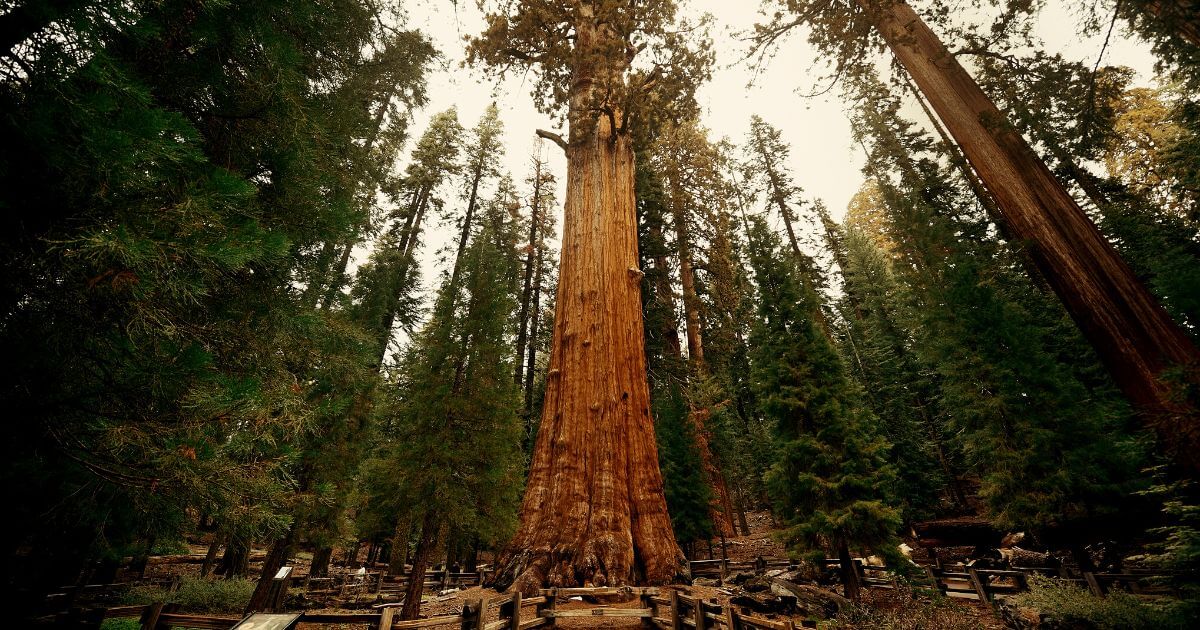
4. Death Valley National Park
Death Valley is not just one of the most fascinating National Parks in the entire country, it’s also the largest one in the lower 48 states.
Our Complete Guide to National Parks in California has detailed insights on what to see and do in this vast expanse.
The lowest point in North America, scorching heat, salt flats, and sand dunes: Death Valley boasts some scenery that is out of this world.
Some highlights you should see are the colorful Artist’s Palette, the impressive Mesquite Flat Sand Dunes, which is one of the most beautiful nature spots in California, and Badwater Basin, the lowest point in the USA at 282 feet below sea level.
Death Valley is also home to diverse wildlife like coyotes, bighorn sheep, chipmunks, kangaroo rats, desert tortoises, and jackrabbits.
Due to the temperatures, the best time to visit this place would be in spring or in late fall. If you want to see most of the major sights (remember, Death Valley is big), plan to visit for 3 days.
For more info, be sure to read our list featuring 23 places to visit in Death Valley!
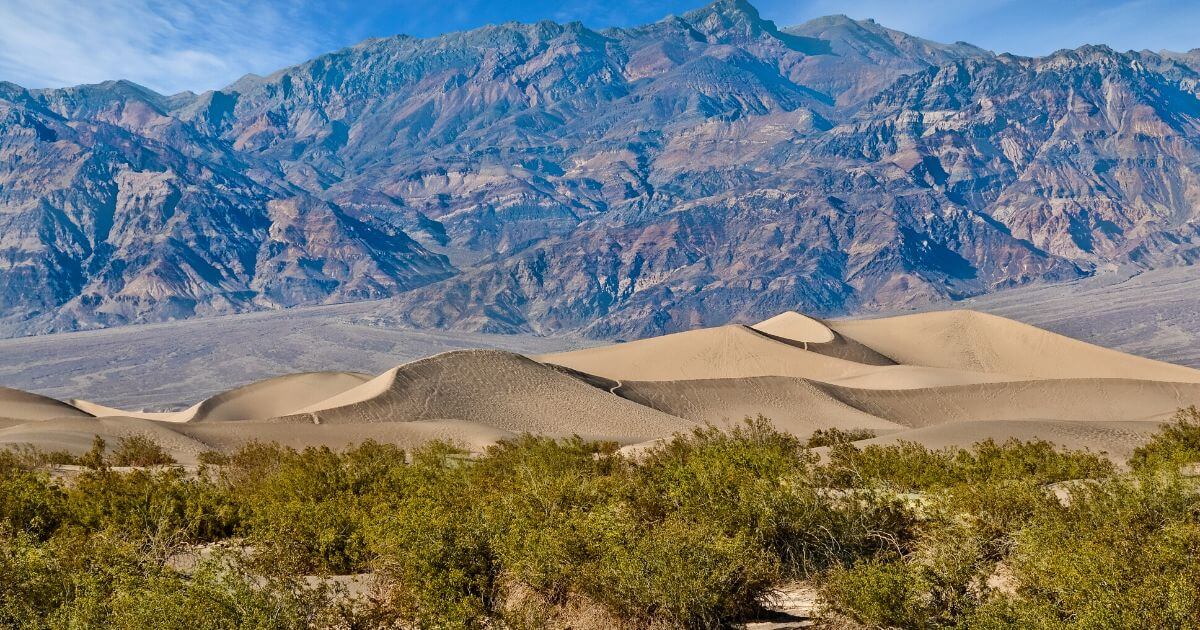
3. Joshua Tree National Park
Joshua Tree with its breathtaking scenery boasts beautiful sunsets, rugged rock formations, and thousands of the park’s name-giving Joshua Trees.
When visiting this National Park, you can expect to see ground squirrels, lizards, and birds, due to them being active in daytime.
At night, this desert’s wildlife is more active: There are snakes, kangaroo rats, bighorn sheep, jackrabbits, and coyotes. The best time for viewing animals is dawn and dusk, when those active at night and day are awake.
Also Joshua Tree’s gorgeous scenery is most enchanting at dawn and dusk.
My tip would be to camp a couple of nights in the park, as gazing at the stars is fascinating there. To explore the backcountry, you should spend more than just one day anyway.
The best time to visit is October to November or March to May, were you could expect to experience the park’s spring wildflowers. Other highlights are Skull Rock, Hidden Valley Nature Trail, Jumbo Rocks, and Cholla Cactus Garden.
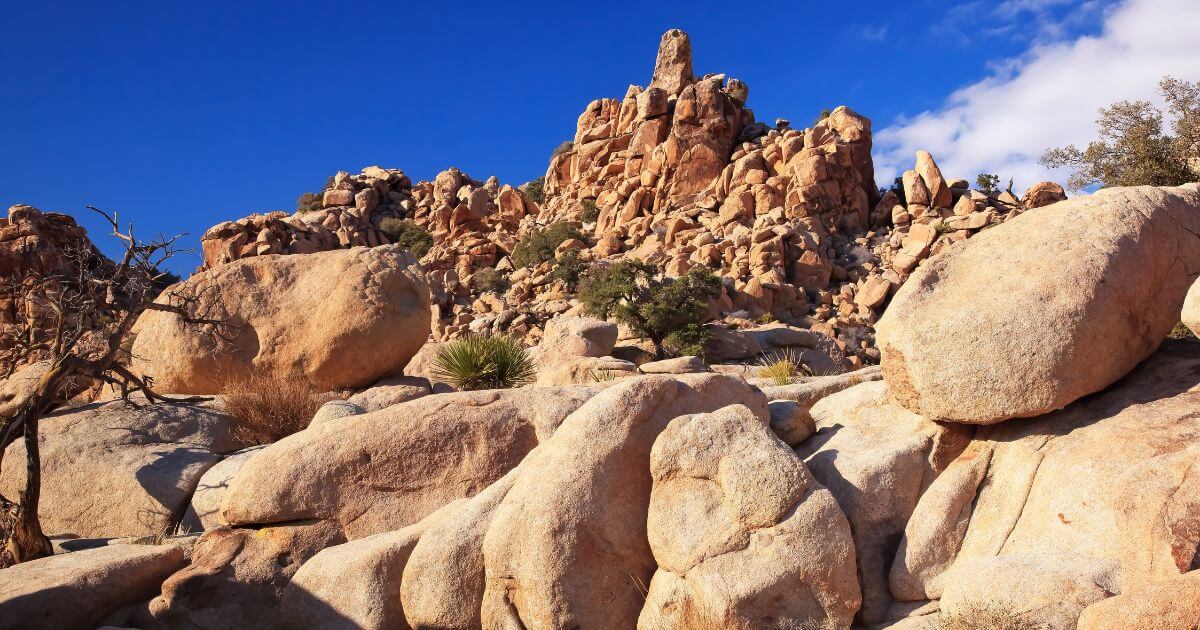
2. Redwood National and State Parks
In this park, National Park Service and California State Parks work together to protect not just some of the tallest trees on Earth, but also many miles of rugged coastline, wild rivers, endless meadows, and oak forests.
If you want to explore all the popular attractions in Redwood National and State Parks, you should stay at least two or three days.
There’s so much to see and do: Stout Grove, Fern Canyon, Gold Bluffs Beach, the Avenue of the Giants, Redwood Creek Overlook, and more.
You can expect to see bald eagles, California sea lions, elks, giant green sea anemones, and also banana slugs and yellow-spotted millipedes.
If you want to visit Redwood when the weather is sunny, you should plan your trip between June and September. The other months, it will be cooler, but also less crowded.
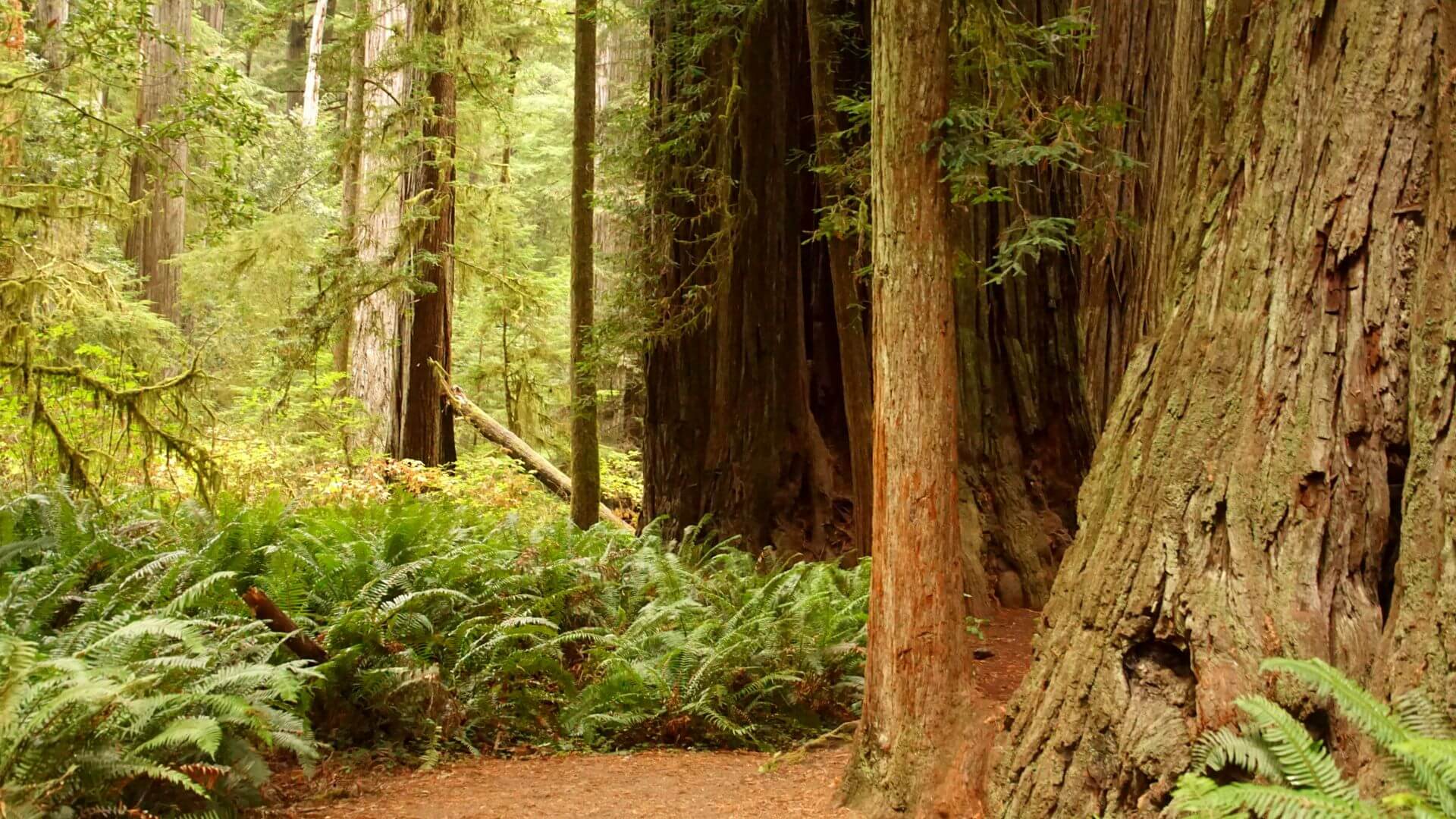
Californias top National Park, the number 1 in this list, is:
1. Yosemite National Park
Yosemite covers just under a whopping 760,000 acres of land about three hours south east of Sacramento.
Spending weeks in Yosemite is easy to do with its 20 miles of bike paths and 800 miles of trails.
The best time to visit this National Park is late spring or early summer, but don’t expect to be alone. Yosemite is the most visited California National Park with over 3.5 million people yearly.
On your trip be sure to check out one of the many waterfalls including Yosemite Falls, Bridalveil Falls, Nevada Falls, and Vernal Falls.
On your hikes be sure to keep an eye out for some of the diverse wildlife. Yosemite is home to animals like black bears, Sierra Nevada Bighorn sheep, Sierra Nevada red fox, pacific fisher, squirrels, mountain lions, frogs, birds, lizards, and snakes.
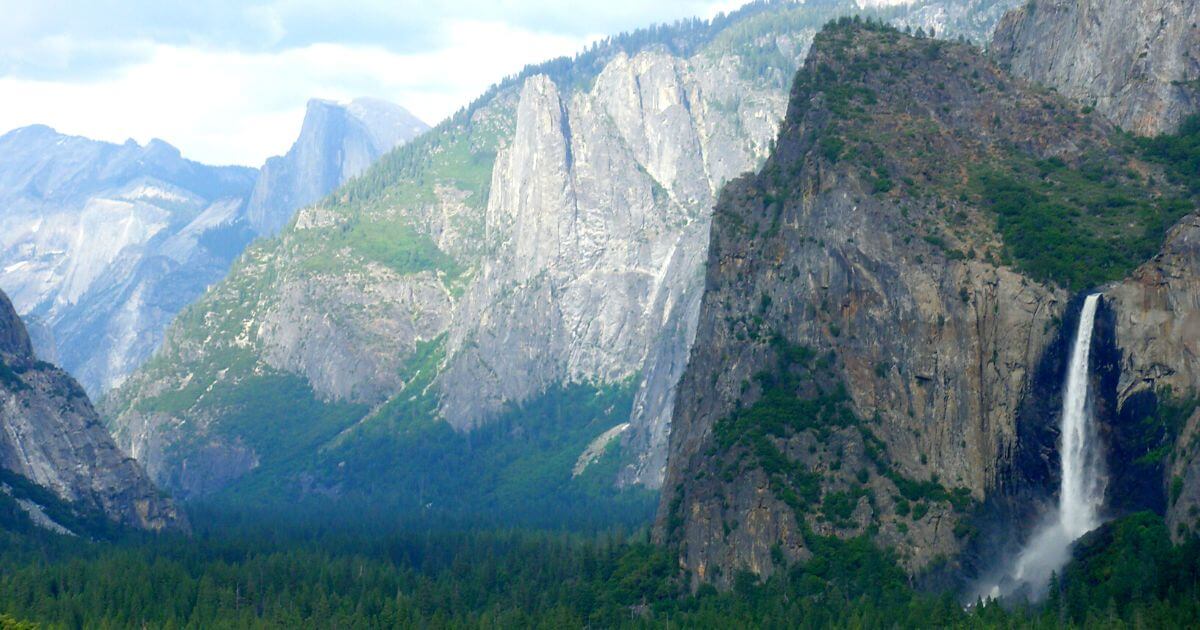
This would not be a complete guide to California’s National Parks without some essential tips.
Therefore, as promised:
Important Tips
- Getting into some National Parks like Yosemite and Redwood can be difficult due to the large number of visitors. Booking tours and guided hikes can help guarantee entrance into the park.
- Use a backpack to be mobile while in the parks! Bring enough snacks, and even more important, enough water! Don’t forget sunglasses, sunscreen, a hat, and good shoes!
- As National Parks are huge, plan your time there!
- Book a guided tour, not just for your guaranteed entrance, but also for getting the experience you are looking for.
- Last but not least: Are you planning to visit more than just one park a year? Then consider to buy an annual park pass, which is your ticket to more than 2.000 federal recreation sites: National Parks, National Wildlife Refugees, National Forests, and more.
Be sure to also check out the 30 best National Parks in the United States!
This was our Complete Guide to National Parks in California. If you love the Golden State’s nature sites as much as we do, also check out the 30 most beautiful nature spots in California!


